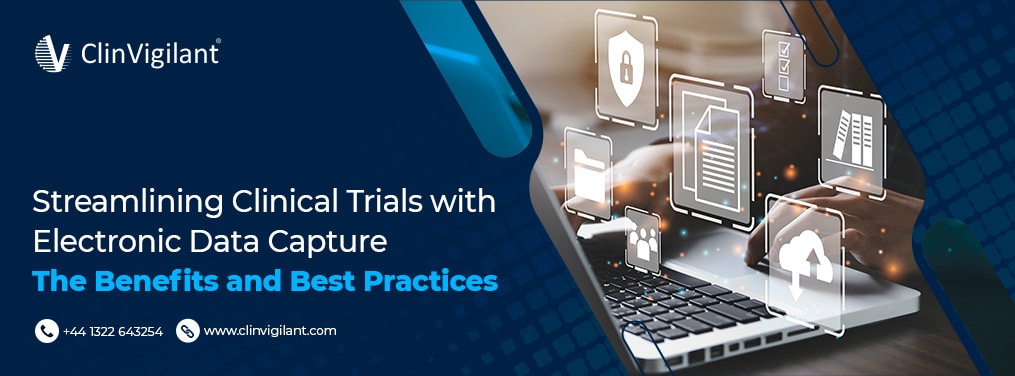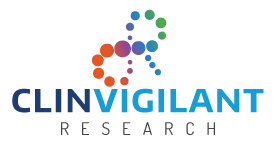
Best Electronic Data Capture Software By ClinVigilant
Electronic data capture (EDC) software has become an indispensable tool for streamlining the collection and management of clinical trial data. In this blog post, we’ll explore what EDC is, the benefits it provides, best practices for implementation, and the top EDC software to consider from ClinVigilant.
What is Electronic Data Capture (EDC)?
Electronic data capture (EDC) in clinical research refers to the use of specialized software to collect, manage, and store clinical trial data in electronic form. It replaces the traditional paper-based data collection method with electronic case report forms (eCRFs).
With EDC, clinical trial data is entered directly into a secure online database rather than recorded on paper. This eliminates the need for manual data entry from paper source documents. The eCRFs are typically designed to mirror the flow of the clinical trial protocol with edit checks and rules to ensure high-quality data.
EDC provides centralized data storage and real-time access to clean, consistent data across clinical trial sites. It enables sponsors, CROs, and sites to monitor the progress and quality of trials through advanced reporting and analytics.
What is eCRF In Clinical Trials
The electronic case report form (eCRF) is the essential component of an EDC system. eCRFs are the electronic version of the traditional paper CRFs used in clinical trials. They provide the interface for site personnel to enter study data for each participant visit.
eCRFs are designed based on the clinical trial protocol, with data fields corresponding to the required observations, measurements, and other information to be collected. They incorporate features such as:
- Logical skip patterns to avoid redundant data entry
- Validation checks to flag discrepancies or protocol deviations
- Lookup tables with acceptable values to standardize data entry
- Calculating fields that automatically compute values
- Electronic signatures to verify user credentials
eCRFs enable real-time data validation during entry. Any issues can be identified and resolved right away, rather than catching errors later in a lengthy cleaning process. This results in higher data quality.
The eCRF platform also manages workflow, tracking a participant’s progress through the study schedule. Access control ensures site staff see only the appropriate eCRFs. Centralized hosting of the eCRFs ensures all sites are entering data into the same standardized forms.
Benefits of EDC in Clinical Trials
Compared to paper processes, electronic data capture systems delivers significant advantages:
Accelerated Clinical Trial Timelines
- Real-time data availability avoids delays for queries, cleaning, and database lock
- Direct data capture removes transcription errors and the need for double data entry
- Efficient processes speed up site activation and training
Improved Data Quality
- eCRF edit checks flag issues for immediate resolution
- Centralized database provides a single source of truth
- Tighter protocol adherence with guided workflows
Enhanced Trial Oversight
- Sponsors and CROs have real-time access to data for central monitoring
- Analytics dashboards highlight trends and metrics to identify problems early
- Query management tools streamline issue resolution between sponsors and sites
Increased Cost Efficiencies
- Reduction in on-site monitoring needs cuts travel costs
- Accelerated timeline to database lock reduces labor costs
- Elimination of source document verification and queries provide savings
Better Collaboration
- Online access allows sponsors, CROs, and trial sites to work on a unified platform
- Secure portals with role-based access streamline information sharing
- Electronic workflow and audit trails improve transparency
Best Practices for Streamlining Clinical Trials with EDC
Implementing EDC requires careful planning and coordination to maximize efficiency gains. Here are some best practices to streamline clinical trials with electronic data capture:
Provide Extensive EDC Training
Thorough training across roles ensures proper system use and compliance with processes. Hands-on practice sessions are ideal to become comfortable with the EDC software. Quick reference guides supplement training.
Design Intuitive eCRFs
Optimize eCRFs through an iterative process involving site feedback. Build in administrative guidance, user-friendly navigation, and intuitive workflows tailored to site personnel.
Perform Real-Time Data Checks
Program edit checks to flag discrepancies during eCRF completion. This enables immediate clarification rather than retrospective queries. Configure system alerts for critical data issues.
Facilitate Early Study Startup
Begin site activation and training as soon as possible. Have eCRFs and tools ready for user acceptance testing. Address any issues to lock down the system.
Provide Ongoing Data Review
Regularly monitor data coverage, quality, and metrics. Generate data visualizations and reports to quickly identify anomalous patterns. Conduct central statistical monitoring to surface problems.
Enable Direct Communication
Embedded communication tools allow trial personnel to collaborate within the EDC system. Auto-generated queries driven by data issues also close the loop with sites.
Support End-to-End Process
Incorporate related workflows like randomization, clinical supply management, and safety reporting into the EDC platform for a unified system. Integrate with other eClinical tools to pass data seamlessly.
Conclusion
Electronic data capture clinical trials has demonstrated immense value for clinical trials through improved quality, oversight, and efficiency. EDC should be considered an essential technology for trial conduct in today’s landscape. With a growing industry focus on centralization, automation, and risk-based approaches, EDC delivers the foundation for a digitally transformed trial ecosystem.
By taking the time to thoughtfully develop eCRFs, provide extensive training, enable real-time data access, and foster collaboration, sponsors and CROs can fully realize the advantages of EDC. Partnering with an experienced EDC provider ensures access to the latest innovations to drive research forward.
FAQs
What are some key features to look for in Electronic data capture software?
Some important features include: drag-and-drop eCRF design, real-time data validation checks, role-based access control, workflow management, query generation and tracking, data visualizations and reporting, integration capabilities with other eClinical systems.
How does EDC software ensure data security and compliance?
EDC systems provide enterprise-grade security protections such as data encryption, user authentication, access logging, and validation checks. They are 21 CFR Part 11 compliant and adhere to industry security standards.
What training and support is required when implementing EDC?
Extensive onsite and remote training sessions should be provided to all users and administrators. Quick start guides, videos, online help, and 24/7 phone/email support enable ongoing assistance. Refresher training is useful after go-live.
How can you determine if EDC clinical trials is improving your clinical trial performance?
Key metrics to track include reduced query rates, faster database lock, improved protocol compliance, accelerated site activation, and faster overall trial cycle times compared to prior studies.
What are the costs associated with using EDC software?
EDC data capture clinical research costs include license fees for the software platform, professional services to configure the eCRFs and system, ongoing maintenance and upgrades, as well as training and support. Costs vary among vendors.

